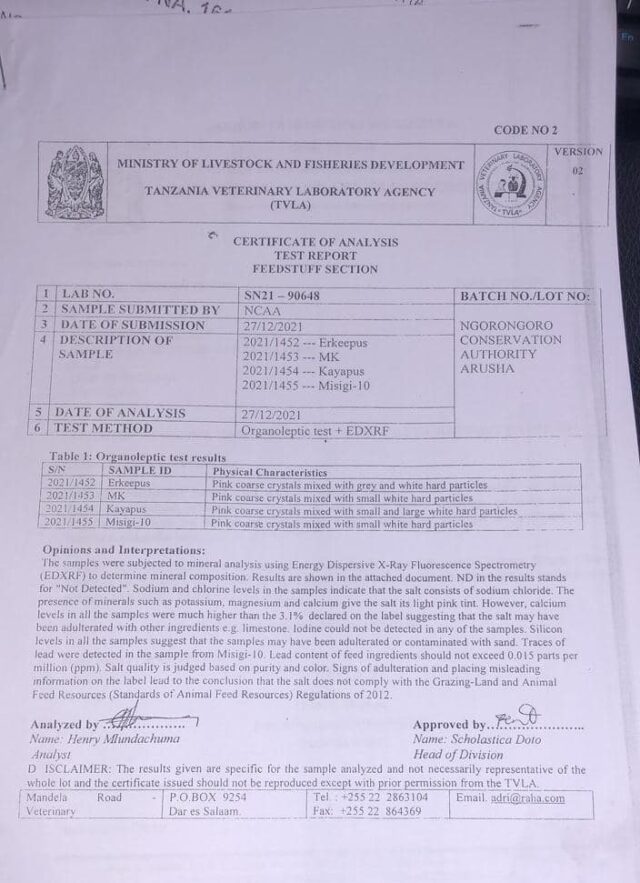The media rampage in the past few weeks financed by the government, fake conservators, tourists and powerful hunting groups undergirding malevolent plans against the pastoral communities in Ngorongoro seems to be taking shape among many people who are unaware of how crimes in Ngorongoro have been purified in the name of conservation.
As a Maasai and human rights activist, I believe I am indebted to explain as far as I know the veracity or otherwise of these claims and try to put into perspective the factual situation on the ground.
Ngorongoro district generally, and Ngorongoro Conservation Area in particular, has for all the years of its existence been marked by brazen violation of human rights in general and land dispossession campaign in particular that has become synonymous to Ngorongoro itself.
The key driving force for community land dispossession aided and abetted by Tanzania’s successive governments has been and remains to surround the tourism business.
To begin, the beauty of Ngorongoro that political/artificial conservators now scream to be in danger owes much to Maasai pastoralist conservation strategies that were in place long before the colonial and Tanzania’s successive governments and their colonial conservation approach came into the limelight.
Indigenous Maasai have co-existed peacefully with wildlife and nature in general and besides being a natural duty, it was and remains to be motive free as they are themselves part of nature.
The conservation narratives first propagated by the colonial regimes and then by Tanzania’s successive regimes are based on financial motives and, therefore, by its modus operandi remain artificial and incompatible with nature itself.
To the government and artificial conservators, conservation is important because they get dollars, they get smooth employment for their people. To them, without money, nature conservation and wildlife are useless as nature and wildlife conservation is only sound if it bleeds money.
Recent developments
Early in January 2022, secret correspondence between government actors on the future of the pastoral community within the Ngorongoro Conservation Area leaked. The plan indicated a section of the Maasai will be relocated by the end of February 2022 to Handeni(Tanga region), and Kitwai in Simanjiro(Manyara Region).
No one in the village government is aware of the particulars of persons to be relocated just three weeks ahead of its execution deadline. Previously, the government alternative land was to be Chato, Geita and Kilindi, Tanga as per the Ministerial Committee that proposed for the current forceful eviction plans.
Ngorongoro has been accustomed to high secrets surrounding relocation schemes. The latest leaked correspondence by the Conservation Area Authorities and the Minister of Natural Resource and Tourism on New Year eve signaled a plan to execute what was named as voluntary relocation.
It should be clear to everyone that the Tanzania government has been heavily investing in poverty within Ngorongoro Conservation Area, believing that the acute poverty in the area will make many people easily relocatable.
Poisoning of Maasai livestock
From 2017, pastoral access to salt-rich areas as craters was banned by Prime Minister Kassim Majaliwa’s order. Alternatively, the government through the conservation authority has been providing saltlicks to individual pastoralists ever since.
But there has since been witnessed a number of cattle dying after consuming the saltlicks provided. By December 2021, it was apparent to the pastoralists surrounding the Ngorongoro crater that the saltlicks provided may have been tempered with toxic substances.
A complaint was filed to the conservation authority and the district local government that resulted in the test of the saltlicks samples in different laboratories. The results revealed that the salt contained a toxic substance and does not in all spheres qualify in accordance with the law.

In the Namanga border, the substance provided indicated to be an industrial chemical in the form of limestone. The laboratory results also indicated beside other harmful materials, the salt has been adulterated with lime and sand.
A cover-up campaign
Because the Conservation Authority knew of this development and the test outcome, they reverted to the media campaign to ensure that these potential crimes may not go into public attention.
In the past two weeks, Tanzania’s media have largely been occupied by bizarre rants based on allegations that Maasai and pastoral land use threaten both ecology and wildlife.
While these claims are not new for those who understand Ngorongoro artificial conservation politics, the ongoing media campaign was meant to cover up potential serious crimes in Ngorongoro.
As I have said, the threat to land dispossession in the NCAA is not new.
From the late 1970s, conservation authorities were claiming that Ngorongoro was then on the brink of losing its purpose. In the 1970s and 1980s, the population was less than 25,000 people, equal to a population density of three people per square kilometre.
To justify this rhetoric’s claim, authorities approached different international actors such as UNESCO which resulted in the commission of inquiry led by the famous ecologist Prof Catherine Homewood and Allan Rodger.
The narrative then was if serious measures will not be taken by 1983, Ngorongoro will be a forgotten place.
The narrative now is, if resettlement will not be effected by 2038, Ngorongoro will be a forgotten world heritage. Fortunately, these senseless narratives have been bashed off by renowned ecologists and humanitarian researchers.
Now, the pastoral population by the government’s own data that were meant to feed the Multiple Land Use Report indicate the population density of nine to 10 persons per square kilometre, far away from the country’s 64 persons per square kilometre profile.
When the hyena wants to eat its children …
Anyone who pays attention to both government and artificial conservators’ versions of the story will recall the African famous saying that says When the hyena wants to eat its children, it first accuses them of smelling like goats.
The claims of pastoral threats to nature and wildlife in Ngorongoro, aided and abetted by the government against its own people, is no more than a hyena trying to eat its own kids by claiming that they are smelling like goats.
Much like hyena kids will never smell goats; the pastoral resource use has never been and will never be a threat to both nature and the wildlife and Ngorongoro is the testimony that pastoralism does not threaten tourism anyway.
Joseph Moses Oleshangay is a lawyer, advocate and human rights activist from Ngorongoro. He can be reached through his e-mail address which is joseshangay@gmail.com, or via Twitter at @Oleshangay. These are the writer’s own opinions, and they do not necessarily represent the viewpoint of The Chanzo Initiative. Want to publish in this space? Contact our editor at editor@thechanzo.com for inquiries.





3 responses
Well articulated
Well articulated. I hope that all decisions that would be taken won’t neglect these opinions.
Very well put and indeed informative